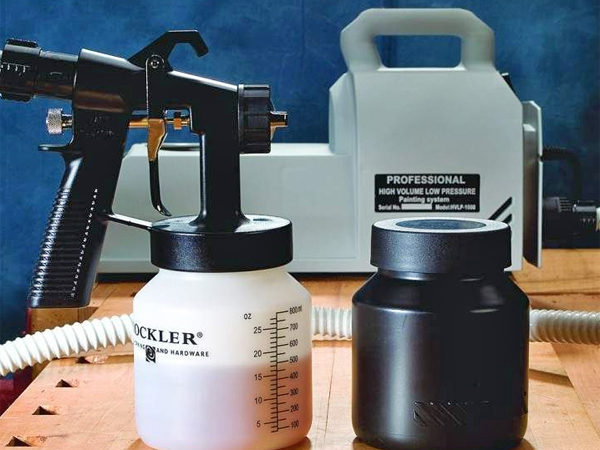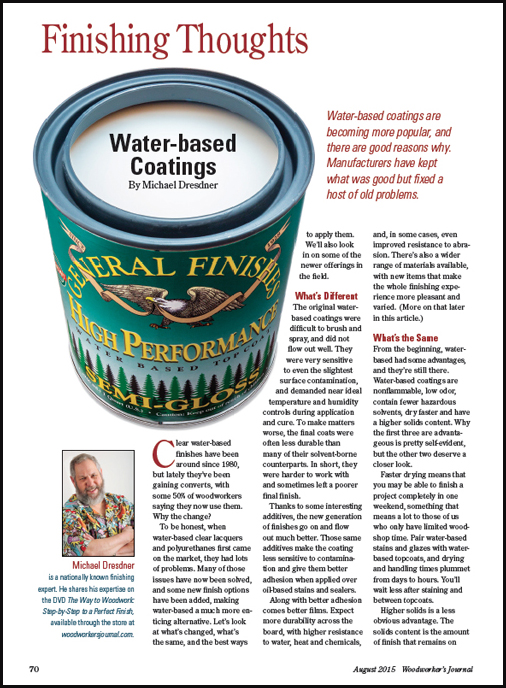
Most woodworking magazines and TV shows suggest that, for purposes of spraying the top coat such as lacquer, shellac or polyurethane, one should use the HVLP sprayer. I don’t have one, but I do have a regular compressor with a 20-gallon tank as well as spray gun. My question is this: Do I really HAVE to have an HVLP sprayer to do top coating on wood? Can I use my regular compressor with some precautions? A definitive answer will be helpful. – Arifur Rahman
Tim Inman: Yes, you can use your existing setup to spray on your top coat. It was a system that worked for decades. So why HVLP now? HVLP (High Volume, Low Pressure) is a much, much more efficient and safer system. You apply lots more finish with lots less waste into the air and the surrounding environment (your shop) with HVLP. Not only is there less waste and pollution with HVLP, there is also a much better finish applied when all is said and done because the HVLP system is able to lay down a “wetter” coating of finish. Some say the newer HVLP systems can give a superior quality finish using up to 40% less materials. The old system you have (it could actually be called HPLV) lays out a finish that is full of mixed air and some of the important solvents carrying the finish have “flashed” out on the way between the spray gun and the workpiece. Your old system is also a much bigger firetrap than the newer HVLP setups. Fire safety counts, too. Your system refrigerates the air as it leaves your spray gun. HVLP can actually use warm air, depending upon what machine generates the airflow.
So, if this is a one-off job and you just want to get it done, then go ahead and use what you have. If you’re wanting to do more than one job, or get yourself set up for future projects, then by all means go with the HVLP systems.
Chris Marshall: And, don’t dismiss the possibility that you really can apply a great-looking finish without spraying at all. In my experience, the new waterborne polys are simple to apply with a good brush, paint pad or even a foam roller. They level out nicely, despite their super-quick drying time, without leaving brush marks. And, there’s no danger of solvent fumes causing a fire. I’ll bet washing my brush is faster than cleaning a spray gun, too. If you’re curious, Michael Dresdner offers some good advice about working with the latest water-based finishes in our August print issue (“Finishing Thoughts”, page 70).






